Experimenting with ice and light
Anastasia Babenko Photography
CREATIVES
Experimenting with ice and light
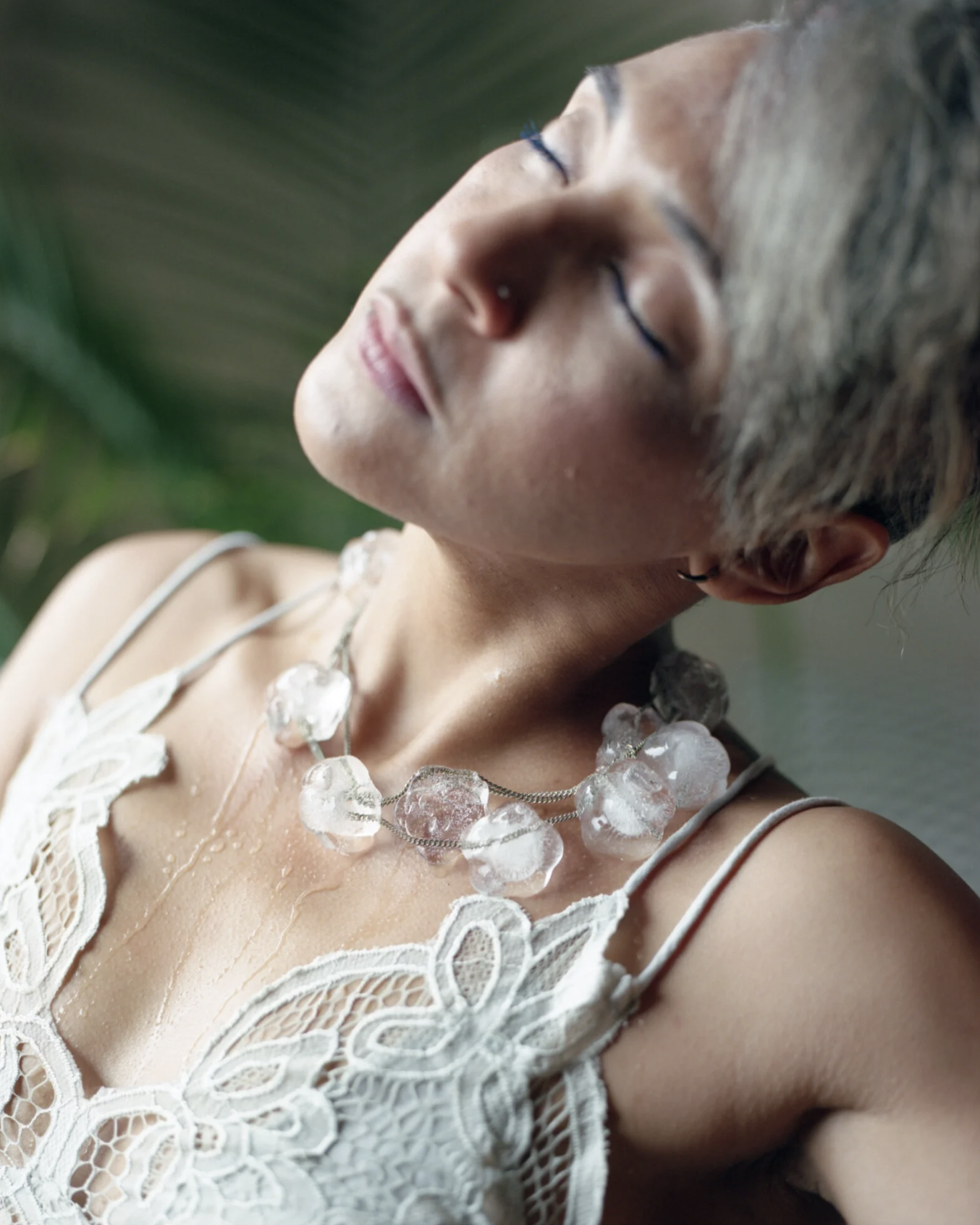
Anastasia Babenko Photography
Incorporating fresh flowers into your home décor instantly elevates the ambiance, adding a touch of natural beauty and elegance to any space. From vibrant bouquets to delicate blooms, flowers create a visual tapestry that captivates the senses and invigorates the soul.

Image via Sheerluxe
WELL BEING BENEFITS
Beyond aesthetics, fresh flowers offer a myriad of benefits for our well-being. Studies show that being surrounded by flowers can reduce stress, anxiety, and depression, fostering a sense of calm and tranquility. Additionally, certain flowers have aromatherapy properties that promote relaxation and better sleep, while their oxygenating qualities purify the air, enhancing indoor air quality.
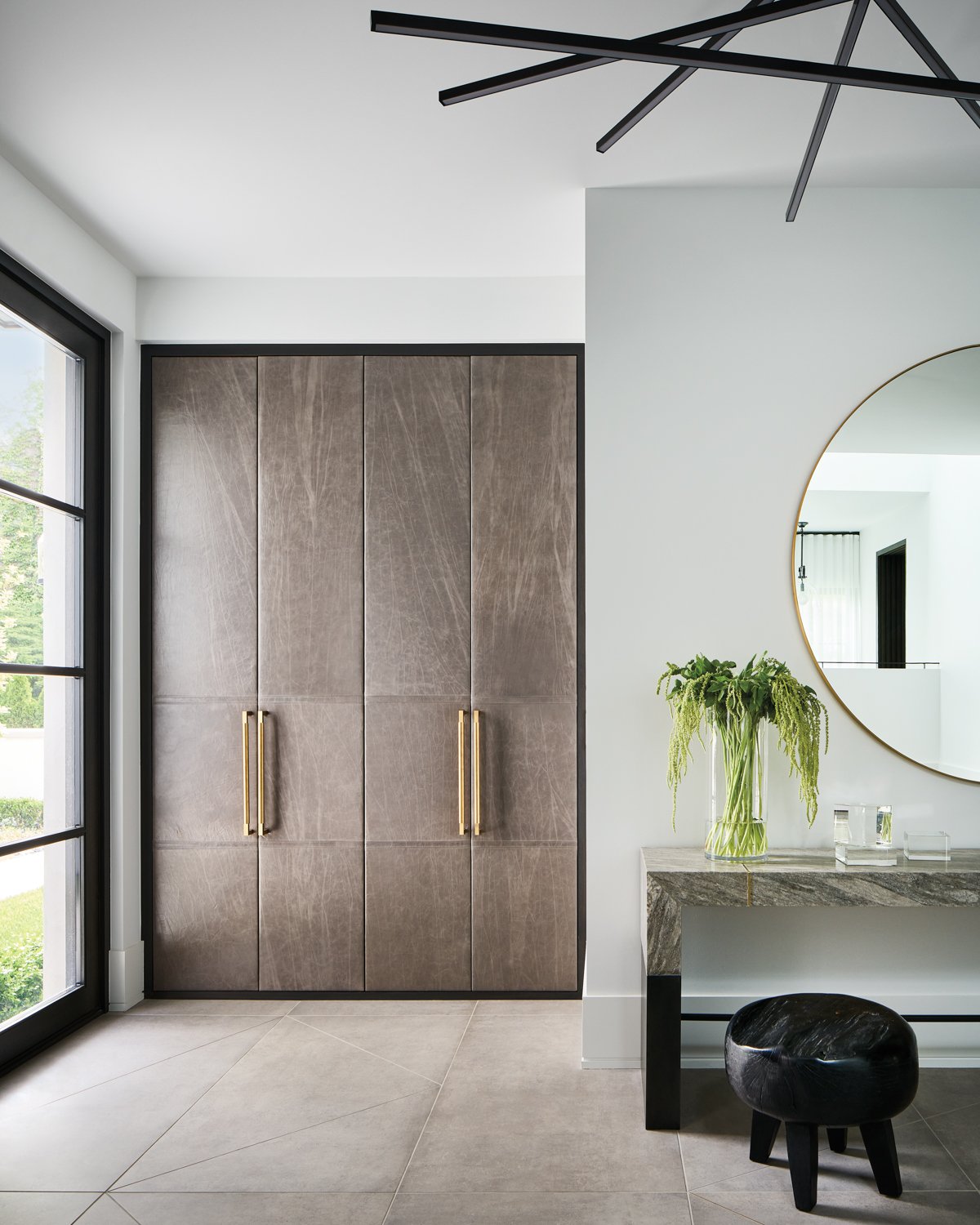
Image via Lux Chicago
CREATIVITY CATALYST
Flowers have the remarkable ability to stimulate creativity and cognitive function. Exposure to natural elements like flowers and plants triggers positive emotions, leading to heightened levels of creativity and problem-solving abilities. Whether arranging bouquets or simply admiring their beauty, incorporating flowers into your home sparks inspiration and ignites creative potential.

Image via domino
ART OF FLORAL DECORATION
Decorating with flowers is an art form that allows for self-expression and connection with nature. Experiment with different flower varieties, colors, and textures to create visually stunning compositions that reflect your personal style. Remember, there are no rules – let your imagination be your guide.

Image via AD
SUBSCRIPTION FOR EFFORTLESS ELEGANCE
If creating your own bouquets isn't your forte, consider a subscription with your favorite flower shop. Have fresh flowers delivered straight to your home or office, effortlessly maintaining a vibrant and inspiring environment. This subscription service also makes for an excellent gift – consider gifting a year-long subscription to your mother or loved ones, bringing them the joy of perpetual blooms and the transformative power of nature.

Image via Pink Tile Bedrosians
Fresh flowers have the power to transform our homes and lives in profound ways. Whether for their aesthetic appeal, well-being benefits, or creativity catalyst, flowers bring a touch of nature's beauty into our daily lives. So, whether you're arranging your own bouquets or opting for a subscription service, embrace the beauty of flowers and let them elevate your home and nourish your soul.
In the ever-evolving landscape of modern living, one trend is capturing the imagination of homeowners and urban planners alike: back houses, also known as ADUs (Accessory Dwelling Units), granny flats, or in-law suites. These compact yet versatile living spaces are becoming increasingly popular, offering a unique blend of functionality, sustainability, and style. In this blog, we'll delve into the world of back houses and explore why they're gaining traction in today's housing market.

Image via dezeen.com
1. Maximizing Space and Functionality
Space is at a premium in urban areas, and that's where back houses shine. These compact structures make the most of the often-underutilized space at the back of a property. Whether you need a private workspace, a rental unit, or a home for extended family members, ADUs provide an elegant solution. Their flexible design allows various uses, from a cozy guest suite to a full-fledged home.

Image via Gordon Beall | A writer’s retreat in Arlington, Virginia, by Harrison Design
2. A Sustainable Approach
Back houses aren't just trendy; they're also eco-friendly. As the world grapples with environmental concerns, ADUs present an opportunity to promote sustainability. Smaller living spaces consume less energy and water, helping to reduce your carbon footprint. Moreover, many back houses are built with energy-efficient features, such as LED lighting, high-quality insulation, and solar panels, further contributing to a more sustainable lifestyle.

Image via dezeen | The home is made with sustainably sourced woods
3. Housing for Multigenerational Living
The nuclear family concept is evolving, and back houses are adapting. Multigenerational living is on the rise, with families choosing to live together to share resources and support one another. ADUs offer a private space for aging parents, adult children, or other family members, allowing everyone to remain independent while staying close.

Image via AD | Seattle Granny Pad
4. Income Potential
The financial aspect of back houses is another compelling reason to consider them. Many homeowners use ADUs as rental properties to generate extra income. This not only helps offset the costs of building and maintaining the unit but also provides a steady stream of revenue. With the advent of platforms like Airbnb, the potential for short-term rentals has also become an attractive option.

Image via AD
5. Contemporary Design and Amenities
Back houses are not just about maximizing space but also about enhancing the overall living experience. Modern ADUs come with stylish designs, contemporary finishes, and state-of-the-art amenities. Think about sleek kitchens, smart home technology, and comfortable living spaces. Some backhouses are even built with eco-friendly materials and innovative space-saving features.

Image via AD | Seattle Granny Pad
6. Increased Property Value
Adding an ADU to your property can significantly increase its overall value. Not only does it provide extra living space, but it also expands the potential uses of your property. This means you can expect a higher resale value and a better return on investment if you decide to sell.

Image via AD
7. A Solution to the Affordable Housing Crisis
There's a growing need for affordable housing options in many urban areas. Backhouses are being embraced as a way to address this crisis. They provide affordable, smaller living spaces that can be rented reasonably, which is particularly important in cities with high living costs.

Photo via Openhouse Architecture
In conclusion, the resurgence of back houses is a testament to our changing housing needs and the desire for more sustainable and functional living spaces. Whether you're looking for an income stream, a solution for multigenerational living, or a stylish, eco-friendly addition to your property, ADUs offer a versatile and modern answer. The future of housing is flexible, sustainable, and smart, and back houses are at the forefront of this exciting evolution.
Decorating your home with color is like adding great music to your space. In the design world, colors are like a symphony, with one color acting as the conductor. You don't have to limit yourself to a specific number of colors; start with a neutral base and slowly add accents like pillows, occasional chairs, wallpaper, accessories, and throws. Next, consider the larger pieces in your room, which always look chic in neutral tones, and then add fun pops of color to create a dynamic and ever-changing space.

Image via Issuu.com
Painting the ceiling is an often-overlooked way to add interest and draw the eye up, highlighting architectural features like beams and moldings.

Image by Bulgac/ Getty images
Color blocking is another fun and affordable way to make a statement with bold, contrasting colors.

Photo by Emily Henderson
Glossy finishes are no longer reserved for bathrooms, as they can add drama and reflective surfaces to any room, making it more extensive and prominent.
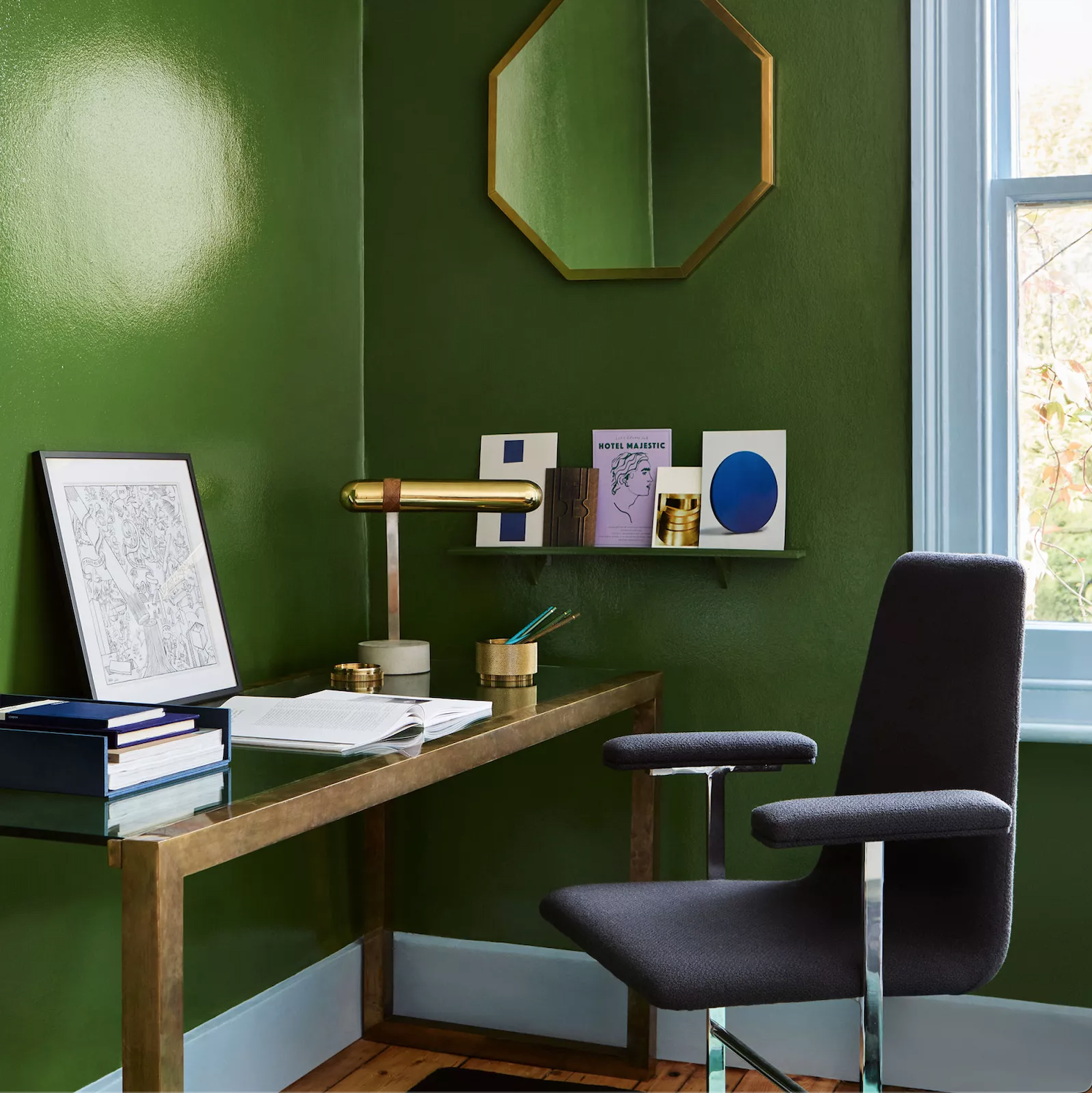
Image via Mylands House of Color
Colors can also alter our perceptions, with the right hues making a small space feel more spacious and bright or bold colors making a large space feel cozy and inviting.

Image via Bulgac/ Getty images
Our color choices also reveal a lot about our personalities, with different colors being associated with other traits. Colors also profoundly affect our moods, with warm hues energizing and cool tones calming.

Color throughout a room's design helps tie everything together and create a finished look. So don't be afraid to experiment with color and have fun with your home decor.
When it comes to decorating your home, one of the key elements that can make a significant difference in the overall look and feel is the use of wood tones. Wood is a timeless material that can add warmth, texture, and depth to any space. However, mixing different types of wood can be a daunting task, and if not done properly, it can make your home look mismatched and chaotic. In this blog, we will explore the art of mixing wood tones within your home and offer some tips to help you achieve a cohesive and harmonious look.

Image by Armadillo
START WITH A NEUTRAL BASE
When mixing wood tones, it's essential to start with a neutral base. This means choosing a neutral color scheme for your walls, floors, and furniture. This provides a blank canvas for you to experiment with different wood tones without overwhelming the space.

Image by belarteSTUDIO
CONSIDER THE UNDERTONES
Before mixing wood tones, it's crucial to consider the undertones of each type of wood. Every wood species has a unique tone and grain pattern. Some woods have warm undertones, such as cherry, while others have cooler undertones, such as maple. When choosing wood pieces, try to stick with either warm or cool undertones to ensure a cohesive look.
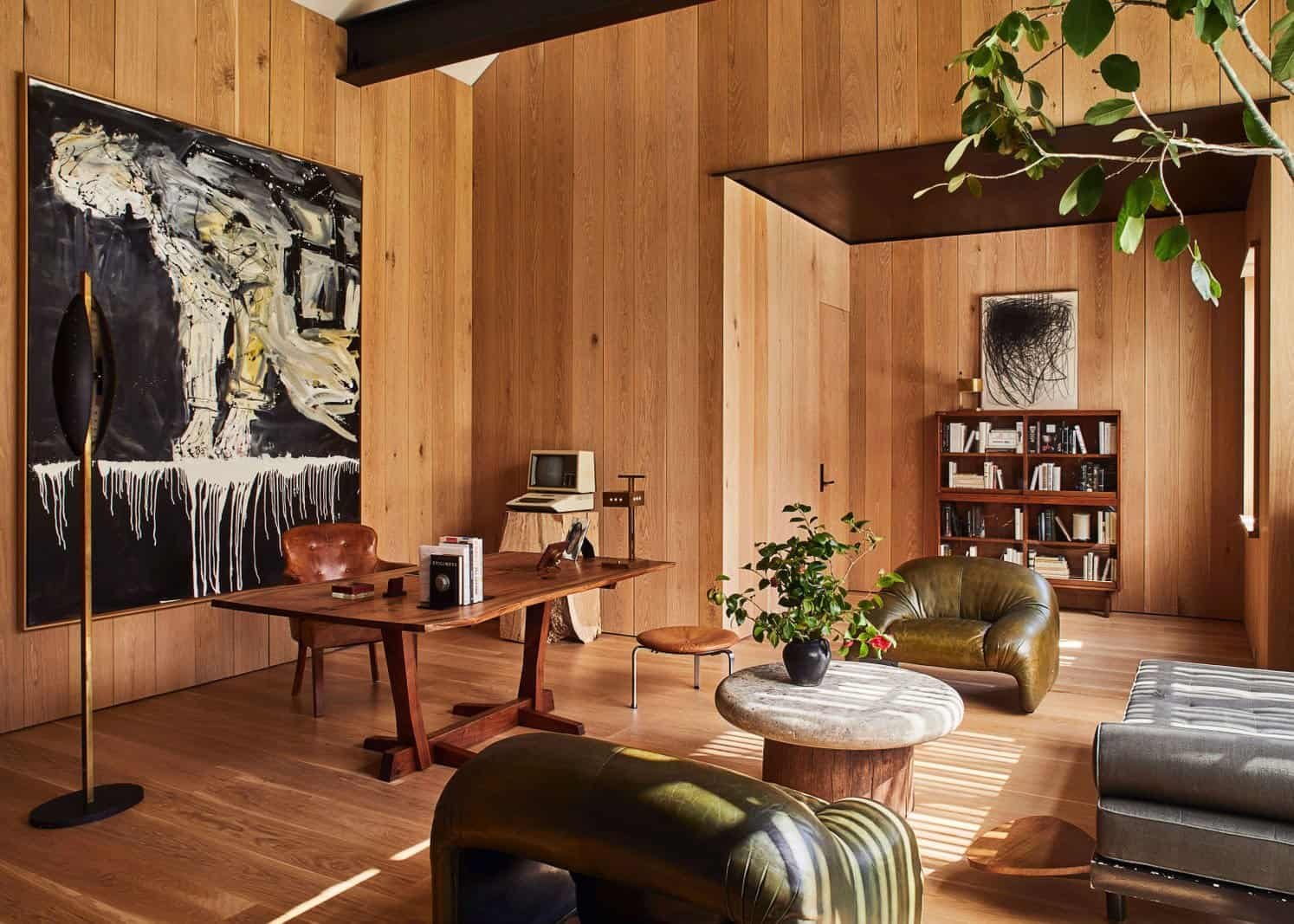
Image by Architectural Digest
USE CONTRASTING TEXTURES
Mixing wood tones doesn't mean you have to use the same type of wood in different colors. Instead, you can mix different wood species, but with contrasting textures. For example, you could pair a sleek, modern walnut coffee table with a rustic oak bookcase. Contrasting textures add visual interest to a room without overwhelming it with too many different colors.
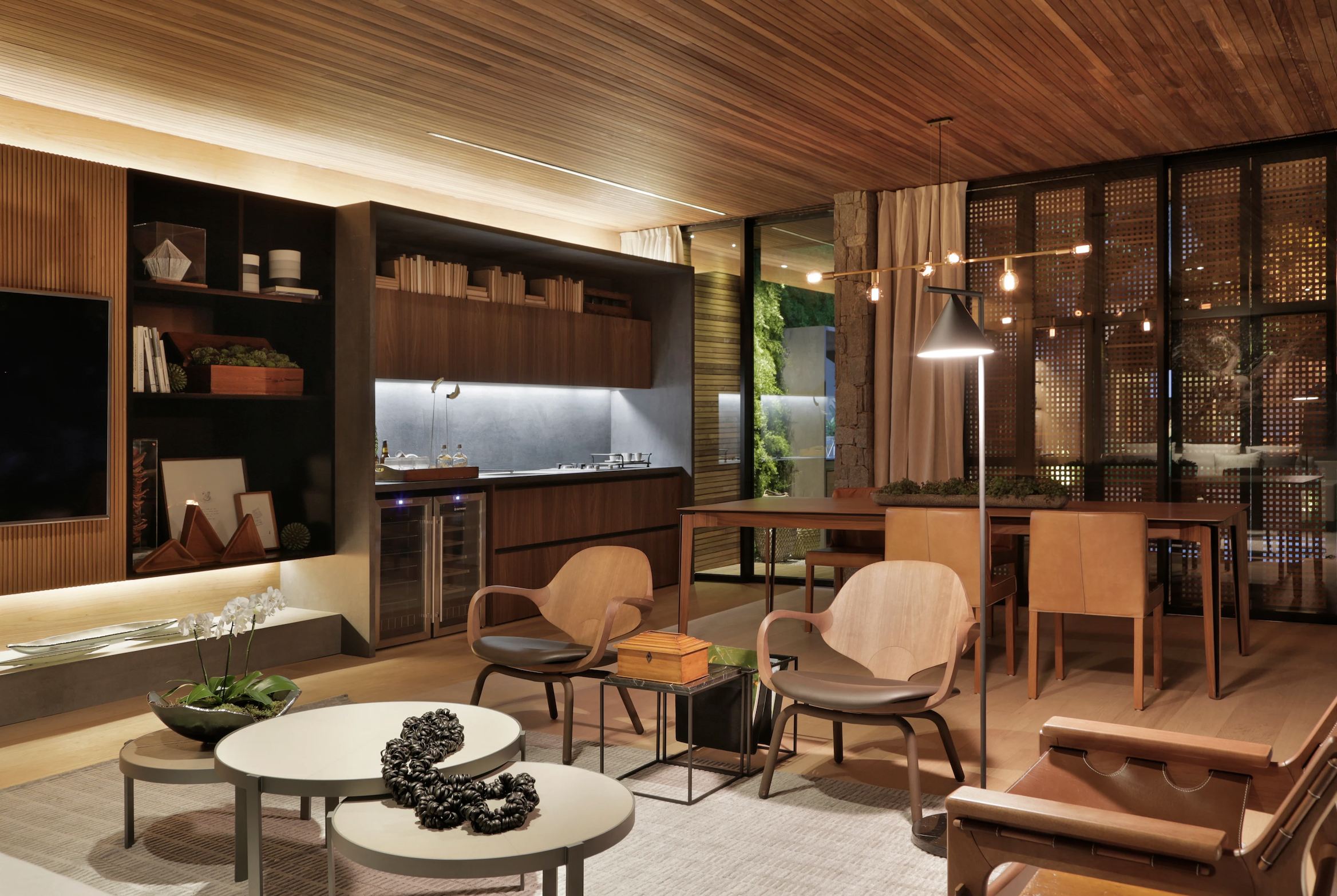
Image by Archilovers
EXPERIMENT WITH SCALE
Another way to mix wood tones is by playing with scale. If you have a large piece of furniture in a dark wood tone, try pairing it with smaller pieces in lighter wood tones. This creates a sense of balance and allows each piece to stand out on its own.

Photo by Helenio Barbetta via est exceptional living
ADD ACCENTS
Finally, don't forget to add accents to tie everything together. This can be done with accessories such as rugs, throw pillows, or curtains. If you're mixing warm and cool wood tones, try adding accents in a neutral color like beige or gray to balance the look.

Photo by Architectural Digest
In conclusion, mixing wood tones can add warmth and character to your home, but it's essential to do it properly. Start with a neutral base, consider the undertones, use contrasting textures, experiment with scale, and add accents to tie everything together. By following these tips, you can achieve a cohesive and harmonious look that reflects your personal style.
My super smart-beautiful-badass-awesome-social and culture conscious-powerful-warrior fighters, coworkers and friends, as we can also call ourselves as, and I, were throwing ideas for a blog piece and the word Batik suddenly came across. The more I thought about it, the more I liked it.
Batik is considered both an art and a craft, and has become a popular and well known creative medium. This art form of decorating cloth using wax and dye, has been practiced for centuries. In Java, Indonesia, batik is part of an ancient tradition, and some of the finest batik cloth in the world is still made there. The word batik originates from the Javanese tik and means to dot.
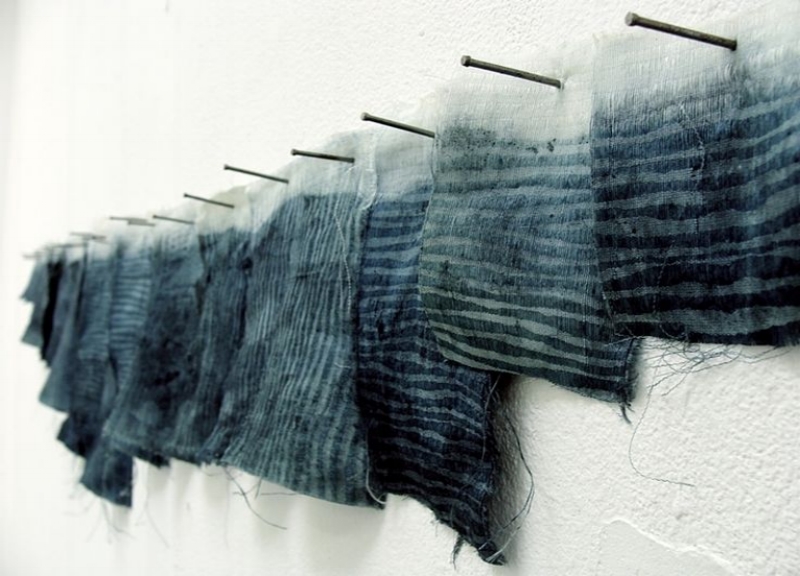
Indonesian batik made in the island of Java has a long history of acculturation, with diverse patterns influenced by a variety of cultures, and is the most developed in terms of pattern, technique, and the quality of workmanship. Some experts feel that batik was originally reserved as an art form for Javanese royalty. There is no doubt that its royal nature was clear as certain patterns were reserved to be worn only by royalty and even banned to be worn by commoners. Consequently, a person's rank could be determined by the pattern of the batik he or she wore. Princesses and noble women may have provided the inspiration for the highly refined design sense evident in traditional patterns.
One can only wonders how the youth would have communicated in a fast way through fabric manipulation. We have had it so easy when I come to think of it. Many Indonesian batik patterns are symbolic. Babies are carried in batik slings decorated with symbols designed to bring the child luck, and certain batik designs are reserved for brides and bridegrooms, as well as their families.
BRAVO Fashion for Conservation and Hoja Nueva! Cocktails for Conservation was a delightful event to celebrate love for life. Fashion for Conservation (FCC) is an organization that brings awareness to endangered wildlife & habitats through Fashion. These Lovers of Life and Nature work hard and give back and WOW I am super proud of knowing YOU loving talented ladies, who are the master minds behind this incredible organization. Seeing friends I haven't seen in a while was très bon. Besos
Griela Perez is a Peruvian fashion designer and owner of Las Polleras de Agus. But, you may ask what a pollera is. Well, a pollera is a one-piece skirt used mostly in traditional festivities and folklore throughout Spanish-speaking Latin America.

Griela Perez
Polleras are made from materials, such as cotton or wool and tend to have colorful decorations. For the most part, the decorations are embroidered, flowers and regional animals are among the most common designs found in polleras.
During the Spanish colonization between 16th and 17th centuries, hacienda owners or hacendados enforced the indigenous population in the Andes to wear them. Traditional polleras come from peasant dress from southern Spanish regions, like Andalusia. Today, polleras are associated with indigenous and folkloric forms of dress.
“Las Polleras de Agus is a mix of respect, passion and admiration for our cultural identity. We seek to reclaim our traditional garments which are being lost over time. By incorporating them into contemporary fashion, we create a versatile line.
Produced through traditional weaving, embroidery, and stitching techniques, our pieces transport you to indigenous Andean Peru. They are created by folk art weavers for people who long to reencounter the past and value one of man's great masterpieces - Pre-Columbian Civilization.”

family from the peruvian Andes
Q. What are you doing now?
A. Trying to rescue an ancient art that is called the maquinasca, which is a Quechua word that means painting with threads (the art of embroidery). It is a sustainable fashion.
Spanish: Tratando de rescatar un arte milenario que se llama la maquinasca palabra Quechua que significa pintar con hilos (el arte del bordado). Es una moda sostenible.
Q. Where do you live?
A. I live in Cusco Peru.
Spanish: Vivo en e Cusco Perú.
Q. What first inspired your jungle themed line? Can people still buy it and if so Where can people buy it if they wanted to? What about the jungle inspires you?
A. What inspired me was the history behind this art because at the beginning it was only the use of the clothes because they looked nice. This was something that came to me because I wanted to put it on my daughter. Then I started to know through the embroiderers that this art and others are being lost. Obviously, that's when I fully commit myself to learning what lies behind this art.
Spanish: Lo que me inspiró es todo lo que hay detrás de este arte porque al inicio fué solamente el uso de las prendas porque se veían bonitas. Esto era algo mío porque quería ponérselo a mi hija. Después empecé a conocer por medio de los bordadores que se está perdiendo este arte y demás. Obviamente, ahí es cuando me comprometo totalmente a aprender lo que hay atrás de este art.
Q. Do you still have that line on sale or are you designing something new?
A. What we are doing is innovating because you know that when something is very repetitive it becomes massive and ours is super exclusive and we always try to create other things.
Spanish: Lo que estamos haciendo es innovar porque tú sabes que cuando algo es muy repetitivo viene a ser masivo y lo nuestro es super exclusivo y tratamos siempre de crear otras cosas.

Griela and the bordadores
Q. What is that thing that inspires from the jungle?
A. I love everything organic, everything that has movement and obviously the jungle is life and that's what inspires me.
Spanish: A mí me encanta todo lo orgánico, todo lo que tiene movimiento y obviamente la selva es vida y es en eso en lo que me inspiro.
Q. Why is conservation important to your brand?
A. It is very important because 1. We advocate to rescue a thousand-years old art that is being lost and 2. (Because we conserve) We make sustainable workshops that give work to the community. We make their own community to develop. Everywhere there is the theme of conservation and how to preserve this ancient art. That way, we can help the embroiderers who live in the there because they are the ones who embroider our garments. What we want is for them to grow and not have to go to the cities but to increase their own communities and contribute to sustainability.
Spanish: Es muy importante porque 1. nosotros nos advocamos en rescatar un arte milenario que se está perdiendo y 2. (porque conservar) hacemos talleres sostenibles que dan trabajo a la comunidad. Hacemos que se desarrolle su propia comunidad. Por todos lados hay el tema de la conservación y como conservar este arte milenario. De esa manera, podemos ayudar a los bordadores que viven allí porque ellos son los que bordan nuestras prendas. Lo que queremos es que crezcan y no tengan que salir a las ciudades sino que hagan crecer sus propias comunidades y contribuir a la sostenibilidad.

Q. How is nature important to you personally from childhood, personal stories or memories you want to share here?
A. Nature is important to me because we came from i. If we do not care, what future awaits us?
Spanish: La naturaleza es importante para mí porque de allí venimos. Si nosotros no la cuidamos que futuro nos espera.
Q. Do you have any anecdote from when you were a child or personal that you would like to share?
A. I grew up in the Andes. I am from Cusco by birth and it is definitely such a different life that nature gives you. We are so far from all that is technology and modernity that it makes more human.
I have the blessing to continue living here in a place where still five minutes away you find nature. I love that my 3 year old daughter enjoys nature. She has been my muse because this brand came out thanks to her when I put the first garment on he.
Spanish: Yo crecí en los Andes. Yo soy cusqueña de nacimiento y definitivamente es una vida tan distinta la que te brinda la naturaleza, tan alejada de todo lo que es tecnología y modernidad lo que te hace más humano.
Tengo la bendición de seguir viviendo aquí en un lugar donde todavía a cinco minutos encuentras naturaleza. Me encanta que mi hija de 3 años disfrutar tanto de la naturaleza. Ella ha sido mi musa porque esta marca empezó gracias a ella cuando le puse la primera prenda.
Q. What are you most excited about with your brand this coming season?
A. We have gone little by little but the goal that we have always had since this project was created is to create an association so that the people who are really the participants and those who make your clothes can acquire many benefits like health, access to technology, etc.. Obviously, in these places you need to implement technology to be able to give them a tablet or computer so they can see the designs they are going to embroider. For me, that has been a great achievement because we are already creating the association and this is one of the goals that the brand has.
In Peru a wave has been awakened that I think I have had a lot to do with because now it is a trend to wear polleras. We have changed that western influence of using things that comes from outside (from abroad) and use what is ours.
Spanish: Hemos ido poco a poco pero la meta que hemos tenido siempre desde que se creo este proyecto es crear una asociación para que la gente que son realmente los partícipes y los que hacen tu ropa puedan adquirir muchos beneficios como salud, acceso a la tecnología, etc. Obviamente, en estos lugares se necesita implantar la tecnología para poderles darle un tablet ó computadora para que puedan ver dan los diseños que van a bordar. Para mí eso ha sido un gran logro porque ya estamos creando la asociación y esto es uno de las metas que tiene la marca.
En Perú se ha despertado una ola que creo que yo he tenido mucho que ver porque ahora es tendencia el uso de las polleras. Nosotros hemos cambiado esa influencia occidental de usar cosas que viene de afuera (del extranjero) y usar lo nuestro.

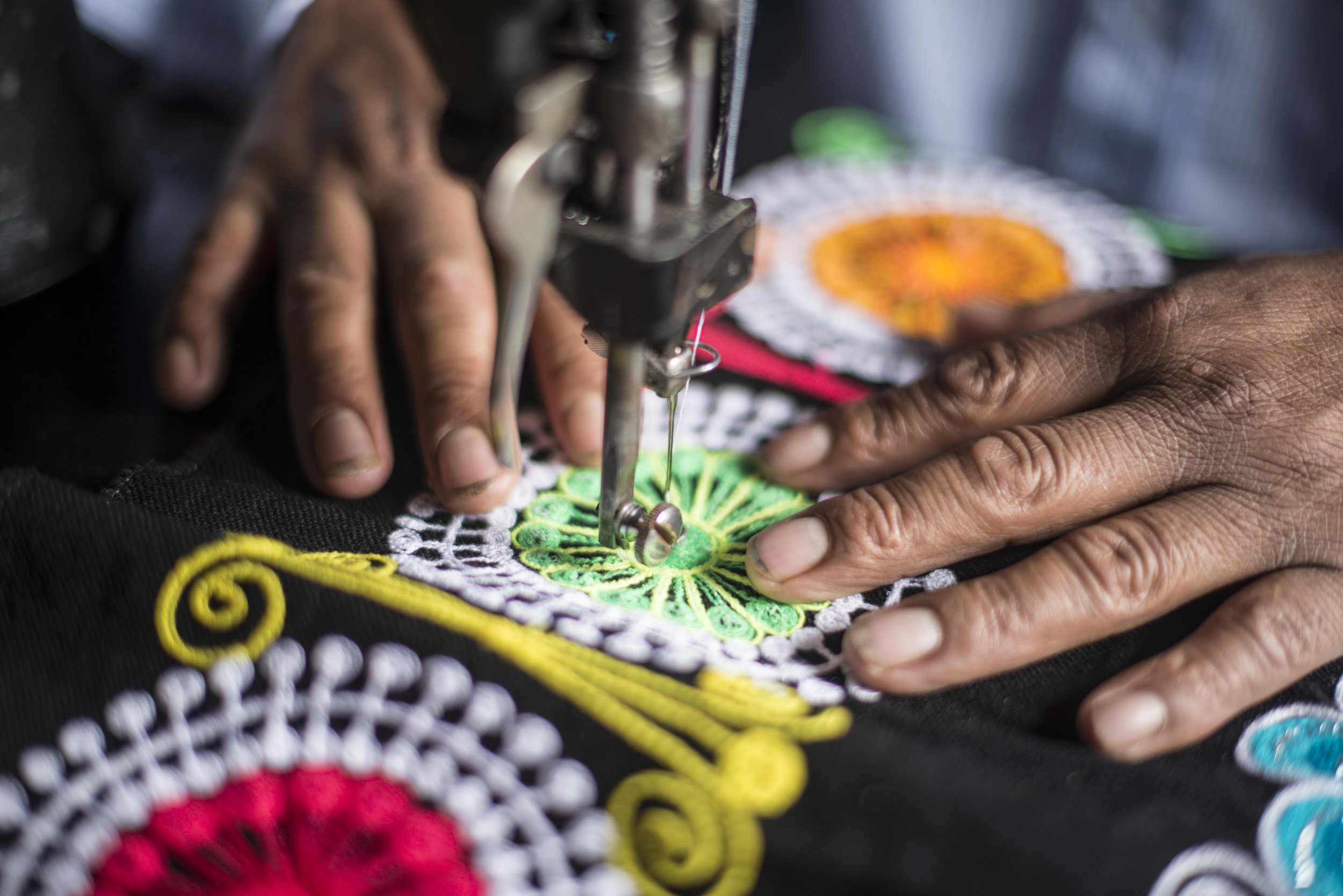
Q. What was your favourite moment about being a part of runway to Peru last year?
A. The moment I entered the backstage and saw that there were other super interesting brands from Peru and see me there around people so important, because we just started, was the most beautiful experience to me. Seeing what happens in the backstage is beautiful. I remember when I came in and was a little scared, I said to myself "I can do this".
This project is very exciting and I see it in the followers of Instagram and Facebook when we publish something there are lots os hearts. This is becoming a love brand and I think we are on track.
Spanish: El momento que entré al backstage y ví que habían otras marcas super interesantes de Perú y verme ahí alrededor de gente tan importante, porque nosotros recién empezábamos, ha sido la experiencia más linda. Ver lo que pasa en el entre bastidores es hermoso. Me acuerdo de cuando entré y tenía un poco de miedo, y me díje "yo si puedo".
Este proyecto es muy apasionante y lo veo en los seguidores de Instagram y Facebook cuando publicamos algo hay muchos corazones. Esto se está convirtiendo en un love mark y creo que vamos en buen camino.

Q. If fashion for Conservation were to do any theme in any place in the world what would you want them to do and where? (Something related to conservation of a place or species)
A. I would love for them to be inspired by the Andes. Fashion for Conservation has as much to give as the theme of the jungle but we also have the Andes, which are so cold and forgotten but it is so cute and has so much color. When you travel to these little towns and you see that everything is so dry, cold and there is no vegetation but suddenly a person full of color appears it is as if life comes back to you.
Spanish: Me encantaría que se inspiren en los Andes. Fashion for Conservation tiene tanto que dar como el tema de la selva pero también tenemos los Andes que son tan fríos y olvidados pero es tan lindo y tiene tanto color. Cuando viajas a estos pueblitos y ves que todo es tan seco, frío y no hay vegetación pero de pronto aparece una persona llena de color y es como te vuelve la vida.
2016 Fashion Lecture: In Search Of Seattle Style. This is an interesting narrative regarding the history of Seattle style by the textile and fabric curator, Clara Berg at Museum of History and Industry MOHAI.
